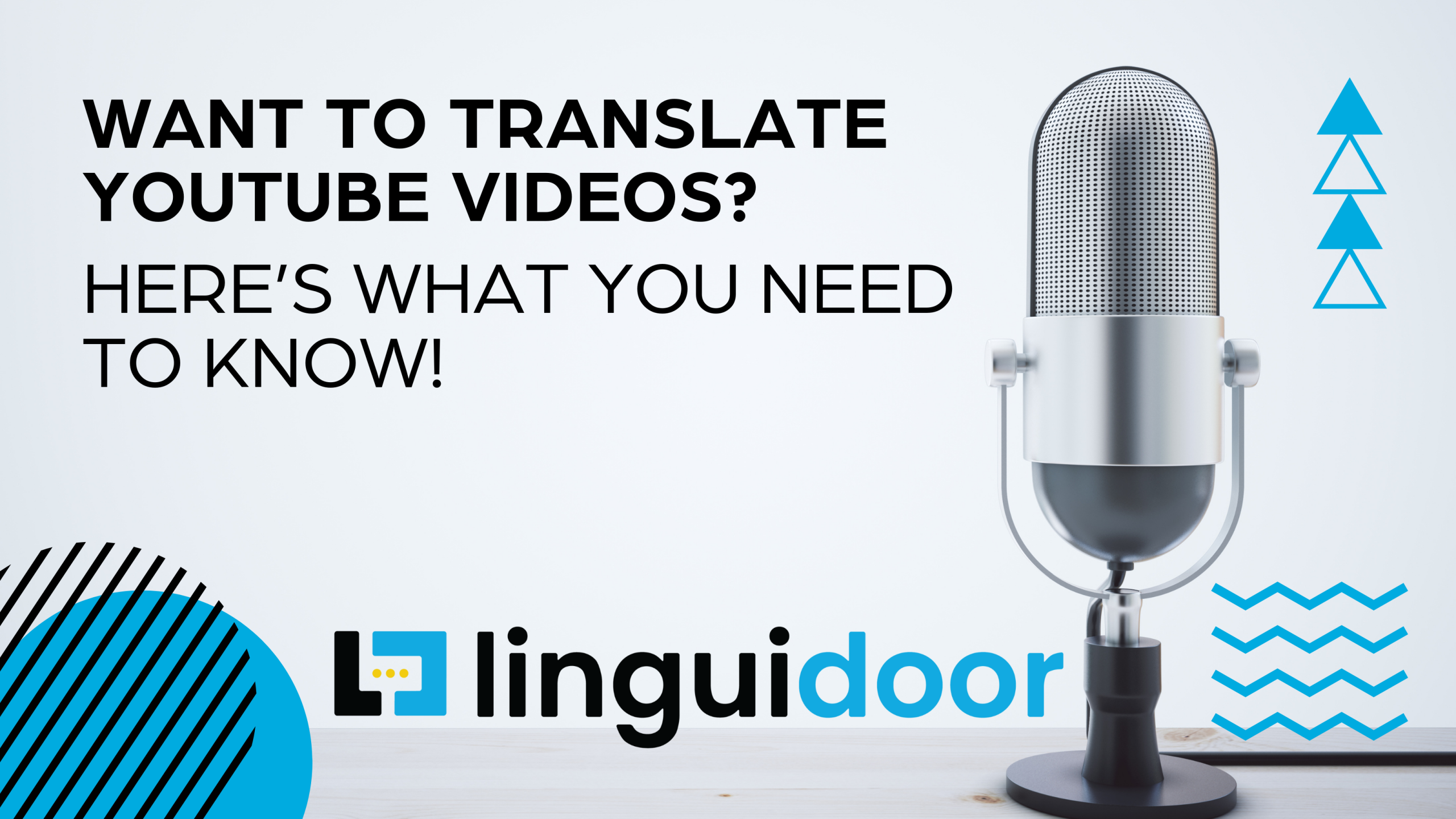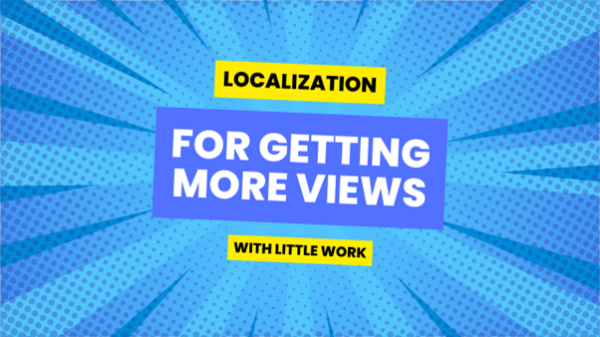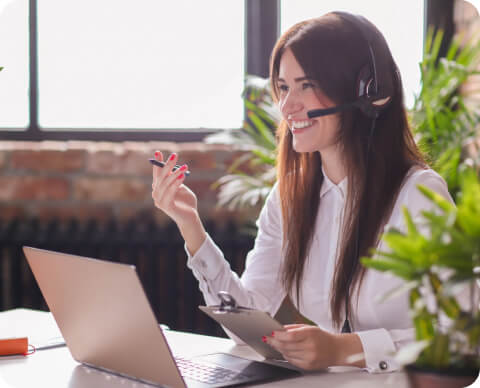Table of contents
- Introduction
- The Pitfalls of Auto-Translation on YouTube
- AI Tools for to help you translate YouTube videos
- The Right Way to Translate YouTube Videos
- The Role of Cultural Sensitivity
- Preserving Voice and Tone in Translation
- Tailoring Translation for Target Audiences
- Quality Assurance and Review
- The Human Touch: When and Why
- Conclusion
Want to Translate YouTube Videos? Here’s what you need to know

Fostering Multilingual Engagement on YouTube
In recent years, YouTube has witnessed an explosion of multilingual content as content creators aim to reach a wider global audience. This is where you need to ask yourself if it’s important to translate YouTube videos. With billions of users from diverse linguistic backgrounds, accurate translation has become an essential aspect of content strategy. While auto-translate features and AI-powered tools promise quick solutions, they often fall short in delivering translations that truly resonate with viewers. In this blog, we will explore the challenges associated with auto-translate and AI tools, and highlight the significance of accurate translation and cultural sensitivity in ensuring successful multilingual engagement on YouTube.

The Rise of Multilingual Content on YouTube
YouTube’s reach extends far beyond its English-speaking origins, embracing creators and viewers from all corners of the world. Content creators are recognizing the vast potential of catering to international audiences and are proactively embracing multilingual strategies. By providing translated YouTube videos, creators can break language barriers, attract global subscribers, and tap into new markets.
Challenges faced when you translate YouTube Videos
When you want to translate YouTube videos, the auto-translate features on YouTube appear to offer a simple solution to translating videos. However, they come with inherent limitations. These tools rely on machine learning algorithms that lack the linguistic finesse required to comprehend context, nuances, and cultural references. As a result, auto-translated YouTube videos often produce inaccurate and confusing content that may even alienate audiences. Additionally, these tools cannot translate YouTube videos to depict creative expressions, humour, or emotions, resulting in a diluted impact on viewers.
AI-powered translation tools, though more sophisticated, still face challenges when dealing with creative and culturally nuanced content. While they may provide acceptable translations for straightforward phrases, they often struggle to capture the essence and intent of the original message, leading to misinterpretations.
The Importance of Translating YouTube Videos Accurately
When you want to translate YouTube videos, the accuracy of the translation goes beyond mere word-to-word substitution; it involves preserving the context, emotions, and cultural references embedded within the content. Providing accurate YouTube Video translations ensures that the intended message remains intact, resonating with the target audience and fostering genuine connections.
Cultural sensitivity is equally crucial when you’re looking to translate YouTube videos. Each culture has its unique set of norms, values, and linguistic expressions. Translators must understand and respect these cultural nuances to avoid misunderstandings or potential offense to viewers. By adapting content with cultural sensitivity, creators demonstrate respect for their diverse audience and create a welcoming and inclusive environment.
Inaccurate YouTube video translations and cultural insensitivity can lead to a loss of trust and credibility, tarnishing the creator’s reputation and hindering their global expansion. On the other hand, creators who prioritize accurate translations and cultural sensitivity gain a competitive advantage, garnering respect and loyalty from their international audience.
The Pitfalls of Auto-Translation on YouTube
In today’s globalized digital landscape, YouTube has evolved into a melting pot of diverse languages and cultures. Content creators seek to capitalize on this vast audience by making their videos accessible to international viewers through translation. While auto-translate features may seem like a quick and convenient solution, they come with significant pitfalls that can hinder effective communication and viewer engagement. In this section, we will explore the limitations of automatic translation, the inaccuracies it introduces in language nuances and context, and its negative impact on viewer engagement and understanding.
The Limitations of Automatic Translation
Auto-translate features on YouTube leverage machine learning algorithms to help automatically translate YouTube videos. These algorithms analyse patterns in vast amounts of data to identify and predict translations for various languages. However, this process has inherent limitations. Machine learning models lack the ability to truly understand human emotions, creativity, and linguistic subtleties, leading to translations that often miss the mark.
Inaccuracies in Language Nuances and Context
Language is a complex and nuanced system, shaped by cultural, historical, and social factors. Words and phrases can carry multiple meanings and connotations, depending on the context in which they are used. Auto-translate tools struggle to grasp these nuances as you try to translate YouTube videos with accuracy, resulting in translations that may be accurate in a literal sense but fail to convey the intended meaning and emotions of the original content.
For example, idiomatic expressions and wordplay, common in creative YouTube content, pose significant challenges for auto-translate tools. These tools may translate YouTube videos, including idioms word-for-word, leading to confusing or nonsensical results that leave viewers scratching their heads.
Moreover, auto-translate algorithms lack the contextual awareness necessary to handle homonyms and words with multiple meanings. Without proper context, the chosen translation may be entirely different from what the creator intended, leading to misunderstandings and misinterpretations.
Negative Impact on Viewer Engagement and Understanding
The primary goal of any content creator on YouTube is to connect with their audience and evoke specific emotions or reactions. That is why they never forget to translate YouTube videos. However, inaccurate translations can disrupt this connection, causing viewers to lose interest or become frustrated with the content.
When viewers encounter translations that feel stilted, awkward, or unclear, they are less likely to engage with the video or even continue watching. This drop in engagement can have a direct impact on metrics such as watch time, likes, shares, and subscriptions, ultimately affecting the video’s performance and reach.
Beyond affecting viewer engagement, inaccurate translations can also lead to misunderstandings or unintentionally offend viewers from different cultural backgrounds. Such misinterpretations can damage the creator’s reputation and brand, potentially leading to a loss of trust and credibility among their audience.
AI Tools to Help Translate YouTube videos
As the demand for multilingual content on YouTube continues to grow, AI-powered translation tools have emerged as a potential solution to help translate YouTube videos. Leveraging machine learning and neural networks, these tools promise quick and automated translations for content creators. In this section, we will provide an overview of AI-powered translation tools, evaluate their strengths and weaknesses, and explore the critical need for human intervention and context preservation.

An Overview of AI-Powered Translation Tools
AI-powered translation tools utilize sophisticated algorithms to process vast amounts of multilingual data and generate translations for various languages. These tools can automatically translate YouTube videos when it comes to text, including video titles, descriptions, and subtitles, to reach a broader international audience.
One of the primary advantages of AI tools is their speed and efficiency. They can handle large volumes of content in real-time, enabling content creators to reach global viewers quickly. Additionally, AI tools are constantly evolving, benefiting from ongoing improvements in machine learning models and language processing capabilities.
Evaluating the Strengths and Weaknesses
While AI-powered translation tools offer convenience, they also come with certain strengths and weaknesses that content creators must consider when they want to translate YouTube videos:
Strengths:
Efficiency: AI tools can process YouTube video translations at a rapid pace, making them suitable for content creators who require quick turnaround times.
Multilingual Support: These tools can cater to a wide range of languages, enabling creators to tap into diverse linguistic markets when they translate YouTube videos.
Cost-Effectiveness: AI tools to translate YouTube videos can be a cost-effective option, especially for creators with limited budgets seeking basic translations.
Weaknesses:
Contextual Understanding: AI tools struggle to grasp the context in which phrases and sentences are used, leading to potential inaccuracies when you translate YouTube videos using AI.
Cultural Nuances: AI models lack the cultural awareness required to handle localized expressions and sensitivities, potentially leading to misinterpretations.
Creative Content Challenges: For content that involves humour, idioms, or wordplay, AI tools may produce literal translations that fail to capture the intended impact.
The Need for Human Intervention and Context Preservation
While AI-powered translation tools have their merits, they cannot replace the expertise and sensitivity of human translators. Human intervention is essential to address the shortcomings of AI tools and ensure accurate and culturally sensitive translations.
Human translators possess the ability to understand the context and emotions behind the content, allowing them to process and translate YouTube videos that resonate deeply with the target audience. They can adapt content to suit specific cultural norms and sensitivities, avoiding potential misunderstandings or offense to viewers from different backgrounds.
Furthermore, human translators excel in handling creative and context-rich content, such as humour, puns, and cultural references, ensuring that the original intent and impact of the content remain intact across languages.
Context preservation is a crucial aspect of translation that AI tools often overlook. Context plays a pivotal role in shaping language usage, and human translators can skilfully retain the essence of the original content while adapting it for different linguistic markets.
The Right Way to Translate YouTube Videos
As content creators aim to break language barriers and connect with global audiences on YouTube, whether or not they decide to translate YouTube videos accurately becomes a key determinant of success. While AI-powered tools and auto-translate features offer convenience, they often fall short in delivering translations that truly resonate with viewers. In this section, we will explore the right way to translate YouTube videos, emphasizing the critical role of professional human translators in understanding context, customizing translations, and ensuring a meaningful and engaging experience for target audiences.
Leveraging Professional Human Translators
Human translators bring a unique set of skills and expertise to the translation process that automated tools cannot replicate. By partnering with professional translators who are native speakers of the target language, content creators gain access to linguistic finesse and cultural knowledge that are essential for delivering accurate and contextually sensitive translations in their quest to translate YouTube videos.
Professional translators are adept at understanding the nuances of language and can interpret the original content within its cultural context. This ensures that the translations resonate with the target audience and evoke the same emotions and reactions as the original content intended.
Beyond language proficiency, human translators possess the ability to maintain the creator’s voice and style across languages, establishing authenticity and fostering a deeper connection with viewers.
Understanding the Importance of Context
Context plays a pivotal role in shaping language usage and understanding. When you are looking to translate YouTube videos, it is crucial for human translators to delve into the broader context of the content. This involves understanding the target audience, the cultural backdrop, and the intended impact of the video.
Translators must comprehend the emotions, humour, and cultural references embedded within the content to ensure that the translations capture the essence of the original message. Additionally, context-aware translations allow creators to adapt the content for specific cultural norms, ensuring that the translated YouTube videos feel organic and relatable to the target audience.
Customizing Translations for Target Audiences
A one-size-fits-all approach may not effectively resonate with diverse linguistic markets as you translate YouTube videos. Successful content creators tailor their translations to suit the preferences and cultural norms of specific target audiences.
Translators can adapt content to include regional colloquialisms, idiomatic expressions, and relevant cultural references that appeal to local viewers. This customization not only enhances viewer engagement but also demonstrates respect for the unique linguistic and cultural backgrounds of the audience.
Moreover, optimizing SEO for each translated version can improve the discoverability of the content in different language markets, further expanding the reach of the translated YouTube videos.
The Role of Cultural Sensitivity
Cultural sensitivity is a vital aspect when you decide to translate YouTube videos, especially when aiming to connect with a diverse global audience on YouTube. Language and culture are deeply intertwined, and understanding cultural nuances is essential to delivering accurate and meaningful translations. In this section, we will explore the impact of cultural nuances on translation, the importance of avoiding cultural misunderstandings and offense, and the significance of adapting content for diverse cultural contexts.
The Impact of Cultural Nuances on Translation
Languages evolve within specific cultural contexts, and words and phrases often carry deeper meanings and connotations unique to a particular culture. Cultural nuances heavily influence how messages are conveyed and received, making it crucial for translators to be culturally aware.
For instance, a straightforward phrase in one language may have a profound emotional impact in another due to differences in cultural norms and values. Cultural nuances can affect humour, politeness, and even the appropriateness of certain expressions. Without considering cultural sensitivity, translations may lose their intended impact or, worse, be perceived as insensitive or offensive to the target audience.
Avoiding Cultural Misunderstandings and Offense
One of the primary goals when you want to translate YouTube videos is effective communication, and mitigating cultural misunderstandings, because these can lead to misinterpretations of content. The potential for offense arises when translators fail to grasp cultural references, social norms, or taboos, resulting in translations that are inappropriate or disrespectful.
Creators must be aware of potential pitfalls and carefully select professional human translators who possess the cultural knowledge required to navigate these nuances. Translators must diligently research and understand the cultural backgrounds of both the source and target audiences to deliver culturally sensitive translations.
Adapting Content for Diverse Cultural Contexts
To create a welcoming and inclusive environment for global viewers, content creators must adapt their content to suit diverse cultural contexts. This involves more than just translating words; it requires understanding the target culture’s values, beliefs, and customs.
Translators play a crucial role in this adaptation process, ensuring that idiomatic expressions, humour, and cultural references are appropriately adjusted for the target audience. By adapting content to resonate with specific cultural norms, content creators can foster a deeper connection with viewers and build trust and loyalty within diverse linguistic markets.
Preserving Voice and Tone in Translation
One of the greatest challenges when you want to translate YouTube videos is maintaining the creator’s unique voice and tone across different languages. The creator’s voice is what distinguishes them from others and contributes to their brand identity. It is crucial to preserve this authenticity in translated versions to ensure a consistent and recognizable presence in all markets. In this section, we will explore the importance of maintaining the creator’s voice, adapting humour, idioms, and pop-culture references, and striking a balance between translation and localization.

Maintaining the Creator’s Voice Across Languages
A content creator’s voice encompasses their writing style, personality, and creative expression. It forms a strong connection with their audience and helps build a loyal following. When translating YouTube videos, the challenge lies in conveying the same voice and emotions in different languages.
Professional human translators with expertise in creative writing are instrumental in this process. They understand the intricacies of language and can adapt the creator’s voice without losing the original message. By carefully considering the tone and emotional impact of the content, translators can recreate the same experience for viewers in the target language.
Adapting Humour, Idioms, and Pop-Culture References
To translate YouTube videos means to inculcate the intendd humour, idioms, and pop-culture references, particularly in entertainment and lifestyle content. Translating these elements accurately while preserving their impact poses a significant challenge.
In many cases, direct translations of humour and idioms may not be effective in the target language. Translators must creatively adapt these elements, considering cultural norms and linguistic nuances. This approach ensures that viewers in different language markets can still appreciate the humour and cleverness in the content.
Similarly, pop-culture references may not resonate in the same way across all regions. Translators may need to substitute references with relevant local equivalents or provide explanations to maintain comprehension.
Striking a Balance Between Translation and Localization
Translation and localization are two interrelated processes that require careful consideration. Translation involves converting the original content into another language while preserving its meaning. Localization, on the other hand, involves adapting the content to suit the cultural preferences and norms of the target audience.
Striking the right balance between translation and localization is essential for an effective global presence. While maintaining the core message, translators must adapt elements such as names, currencies, measurements, and cultural references to resonate with the target audience.
An overemphasis on direct translation can lead to a lack of cultural relevance and may alienate viewers. Conversely, excessive localization can dilute the creator’s voice and message. Skilled human translators understand how to achieve a harmonious balance between these two aspects, ensuring that the translated content remains authentic and culturally sensitive.
Tailoring Translation for Target Audiences
As content creators seek to expand their reach and engage with diverse global audiences on YouTube, tailoring translations to suit the preferences and cultural norms of specific target audiences becomes essential. In this section, we will explore the process of identifying and understanding the target audience, adapting translations to cater to regional preferences, and optimizing SEO for multilingual discoverability.
Identifying and Understanding the Target Audience
Before embarking on the translation process, content creators must identify and understand their target audience in each language market. Different regions have distinct linguistic and cultural characteristics, and viewers may have varying preferences when it comes to content consumption.
Analysing YouTube analytics, audience demographics, and viewer feedback can provide valuable insights into the interests, behaviours, and preferences of specific language markets. This information allows content creators and translators to tailor translations that resonate deeply with the intended audience.
Adapting Translations to Suit Regional Preferences
Cultural preferences, linguistic variations, and local idioms all play a significant role in shaping how content is perceived and received in different regions. Translators must adapt translations to suit regional preferences while ensuring that the core message and creator’s voice remain intact.
For example, certain words or phrases that are well-received in one region may have a different connotation or be less relevant in another. Translators can use regional colloquialisms and expressions to make the content feel more familiar and relatable to local viewers.
Furthermore, taking into account specific cultural norms and sensitivities is essential to avoid any unintentional offense or misunderstanding. Customizing translations in this way demonstrates respect for the diverse backgrounds of the audience and fosters a deeper connection with viewers.
Optimizing SEO for Multilingual Discoverability
To reach a wider global audience, optimizing SEO for multilingual discoverability is crucial. Simply translating keywords may not be sufficient to capture the nuances of different language markets and how viewers search for content.
Translators can research and implement region-specific keywords and phrases to improve the searchability and visibility of the translated videos. Understanding how viewers in each language market search for content allows creators to tailor titles, descriptions, and tags accordingly.
Localized SEO strategies can significantly enhance the discoverability of translated content, increasing the likelihood of reaching new audiences and building a loyal global following.
Quality Assurance and Review
As content creators invest time and effort into translating YouTube videos to connect with global audiences, ensuring the quality and accuracy of the translations becomes paramount. Implementing a robust review process, gathering feedback from viewers, and making iterative improvements are essential steps to achieve long-term success. In this section, we will explore the importance of quality assurance and review in the translation process.

Implementing a Robust Review Process
A robust review process is crucial to identify and rectify any errors or inconsistencies in the translated content. After translations are completed, it is essential to have them thoroughly reviewed by qualified linguists or language experts.
Reviewers can cross-check translations for accuracy, cultural sensitivity, and adherence to the creator’s voice and tone. They can ensure that humour, idioms, and pop-culture references are appropriately adapted, and regional preferences are considered.
A clear and systematic review process allows content creators to catch any potential issues before the translated videos are published, maintaining the overall quality of the content.
Gathering Feedback from Viewers
The viewers themselves provide a valuable source of feedback. Content creators can actively encourage their international audience to provide feedback on the translations. This can be done through comments, surveys, or even dedicated community posts seeking feedback on the translation quality.
Viewers’ feedback can shed light on how well the translations resonate with the audience and whether they accurately convey the intended message. Creators can use this feedback to identify areas of improvement and better understand the preferences and expectations of their global viewers.
Iterative Improvements for Long-term Success
Translation is an ongoing process of improvement. Content creators should view the translation of YouTube videos as an iterative journey rather than a one-time task. With each new video, creators can apply the lessons learned from previous translations to continually improve the quality and cultural relevance of future content.
Iterative improvements demonstrate the creator’s commitment to providing an excellent experience for their international audience. As creators adapt and refine translations over time, they establish a deeper connection with viewers, building loyalty and trust within the global community.
The Human Touch: When and Why
In the digital age, content creators have access to a plethora of translation tools, including AI-powered solutions. While these tools offer convenience and speed, there are specific situations where the human touch of professional translators is indispensable. In this section, we will explore when to use human translators over AI, the importance of human curation when handling complex subject matter and industry-specific content, and the benefits of maintaining authenticity through human translation.
Knowing When to Use Human Translators Over AI
While AI-powered translation tools can be helpful for simple and straightforward content, there are scenarios where human translators excel. Complex creative content, nuanced language, and cultural references demand the expertise and sensitivity of human linguists. AI tools may struggle to accurately convey emotions, humour, and context, leading to misunderstandings or unintended offense.
Human translators bring a deep understanding of linguistic and cultural intricacies, ensuring that translations resonate authentically with the target audience. Additionally, for industries that require precision and accuracy, such as legal, medical, or technical fields, human translators provide the necessary expertise to handle specialized terminology effectively.
Handling Complex Subject Matter and Industry-Specific Content
In content that deals with complex subject matter or involves industry-specific jargon, the importance of human curation becomes evident. Technical terms, legal language, or medical terminology require precise and contextually appropriate translations to maintain accuracy.
Human translators possess domain-specific knowledge, allowing them to comprehend and convey subject matter expertise effectively. This ensures that the content remains credible and reliable for viewers, regardless of the language they speak.
For creative content that involves intricate wordplay, idioms, or puns, human translators can creatively adapt these elements to preserve the original intent and humour in the translated version.
Benefits of Human Curation in Maintaining Authenticity
Maintaining authenticity is vital for content creators to build trust and loyalty with their audience. Human translators are adept at preserving the creator’s voice and tone across languages, ensuring a consistent and recognizable brand identity.
Authenticity goes beyond mere translation; it involves understanding the creator’s style, emotions, and creative expressions. Human translators are skilled in retaining the essence and emotional impact of the original content, fostering a genuine connection with viewers.
Additionally, human curation allows for the adaptation of content to suit regional preferences and cultural norms. By incorporating cultural references and idiomatic expressions that resonate with the target audience, human translators create a more relatable and engaging experience for viewers.
Conclusion
As YouTube continues to be a powerful platform for content creators to connect with global audiences, accurate translation emerges as a key competitive advantage in the digital landscape. By recognizing the impact of context and culture on YouTube success, content creators can strive for linguistic excellence and achieve a truly global reach. In this concluding section, we will summarize the importance of accurate translation, the influence of context and culture, and the path to success in the global YouTube community.
Embracing Accurate Translation as a Competitive Advantage
In the pursuit of global engagement, content creators must prioritize accurate translation as a fundamental aspect of their YouTube strategy. While AI-powered tools and automated features offer convenience, they may not deliver the nuanced and culturally sensitive translations that resonate deeply with viewers.
By embracing professional human translators, content creators gain access to linguistic finesse and cultural expertise that are essential for delivering high-quality translations. These translators ensure that the creator’s voice, emotions, and intended impact remain intact across language barriers, fostering an authentic connection with viewers worldwide.
The Impact of Context and Culture on YouTube Success
Understanding the importance of context and culture in translation is pivotal to achieving YouTube success on a global scale. Context-aware translations allow creators to adapt content to suit specific cultural norms, ensuring that the translated videos feel relatable and engaging to the target audience.
Cultural sensitivity plays a significant role in shaping how messages are received and interpreted. By avoiding cultural misunderstandings and adapting translations to cater to regional preferences, content creators create a welcoming and inclusive environment for their international viewers.
Striving for Linguistic Excellence and Global Reach
Striving for linguistic excellence is more than just translating words; it involves capturing the essence and emotions of the original content. Skilled human translators navigate linguistic intricacies to ensure that translations resonate authentically with viewers, fostering loyalty and trust within the global YouTube community.
Achieving a global reach on YouTube requires creators to tailor translations for target audiences, optimize SEO for multilingual discoverability, and continuously improve through iterative feedback. By curating content for diverse cultural contexts, content creators can transcend linguistic barriers and build a thriving international following.

Made up your mind yet?
Empower your globalization goals today!




